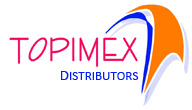Diversify Your Suppliers, Ensure Accurate Inventory Management and Establish a Food Storage Plan
3. Diversify Your Suppliers
Relying on a single supplier for all raw materials and finished goods is one of the biggest mistakes business owners can make. Although there are benefits in forging a strong relationship with a primary distributor, there’s no harm in doing the same with several suppliers. If one cannot meet their obligations, you can always call on another to fill in any supply gaps in your food inventory. Some reliable suppliers of quality ingredients are High Tower Inc., and Unilever Food Solutions.
4. Ensure Accurate Inventory Management
Supply shortage requires vigilance in keeping accurate inventory management. Get less disruption and stress when you have better control over your stockpile. Your primary goal is to track on-hand supplies (raw materials, packaging, and ingredients). Also, ensure you have enough to fulfill customer orders and to keep as reserves before any shortages occur.
The best practice for a medium-sized business is to have a buffer of at least 15 servings per dish for a 40-item menu. It follows that raw materials on hand should produce the same number. Accuracy in records is crucial to a company’s health. And it guarantees turnover is fresher and available items in the stockroom aren’t too few or too many.
5. Establish a Food Storage Plan
Owning and operating a food business goes beyond proper cooking and excellent food service. Numerous factors also hinge on food safety operations and efficient food storage. Maintaining safe and secure food storage solutions prevents contamination and spoilage. Such issues result in financial loss, supply wastage, and potential food poisoning. Proper food storage plans help prolong the shelf life of goods, allowing for extended utilization of supplies. With a system in place, you are more capable of stockpiling supplies. Source: unileverfoodsolutions.com.ph

